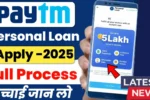Optical Illusion Puzzle Test 2025: Optical illusions have consistently fascinated people across the globe because of how they trick the human brain into seeing what is not immediately obvious.
An Optical Illusion Puzzle Test is one such challenge, where participants are asked to spot minute differences in numbers, shapes, or visual patterns. The puzzle in question – Spot the Number 6482 Among 6432 – is an excellent example of visual trickery designed to test memory, concentration, speed, and attention to minor detail.
In this particular test, the goal is simple yet tricky: you are shown a cluster of identical numbers (6432) repeated multiple times, with only one variation hidden among them – the sequence 6482. At first glance, all numbers look the same, but with patience and sharp focus, one can eventually identify the odd sequence.
This mental exercise forms part of a worldwide trend of brain teasers and puzzles used not only for entertainment but also as tools to strengthen visual focus, mental agility, and even problem-solving skills.
The Psychology Behind Optical Illusions
Optical illusions take advantage of how the human brain processes visual information. Our eyes capture patterns quickly, but the brain often overlooks tiny differences in favour of the bigger picture. When rows of numbers like 6432 are repeated, the mind develops a rhythm of recognition, making it easy to miss the subtle change in the sequence – for instance, when the “3” is replaced with an “8” as in 6482.
This tendency of the human mind to overlook small changes is called change blindness, a well-known psychological concept. Illusion puzzles work on this principle, pushing the brain to slow down and pay close attention to detail rather than falling into familiar recognition patterns.
Why Spotting 6482 Among 6432 Is Challenging?
The sequence 6432 and 6482 is visually similar because three out of four digits are the same. The human brain processes numbers and words using pattern recognition. When most of a sequence matches a dominant pattern, our mental system tends to “autofill” the missing element, convincing us we are seeing the repeated number when in fact one digit has changed.
Thus, when someone quickly scans rows of numbers, the digit 8 in 6482 is often ignored, disguised by the surrounding familiar sequence 6432.
Benefits of Doing Puzzle Tests
Engaging in optical illusion puzzles and number-spotting activities can bring several benefits to both children and adults.
- Improved Focus and Concentration: These puzzles force the mind to filter out distractions and concentrate on the smallest details.
- Better Visual Memory: Repeatedly spotting differences strengthens the capacity to remember shapes, numbers, and patterns.
- Stress Reduction: Despite being mentally engaging, such tasks provide relaxing breaks from routine work activities.
- Problem-Solving Enhancement: Trains the analytical side of the brain by encouraging new perception methods.
- Entertainment Value: They add fun to everyday life without the need for high-tech gadgets or expensive activities.
How to Solve: Spotting 6482 Step by Step
When attempting to solve the Optical Illusion Puzzle Test of locating 6482 among 6432, the following systematic method helps:
- Slow Down the Scan – Instead of rushing, begin by scanning each line of the sequence carefully.
- Break into Parts – Focus digit by digit, especially in the transition between 6, 4, and the third digit.
- Search for the ‘8’ – Since the third digit is the only one that changes, directing attention specifically to this spot increases accuracy.
- Cross-Check Suspicious Patterns – If a cluster seems slightly different, re-read it without rushing to confirm the numbers.
This approach increases the chance of spotting 6482 quickly and efficiently.
Tabular Comparison of Digits
A simple comparison can help us visually understand why 6482 is often hidden successfully among clusters of 6432.
| Number | Digits in Sequence | Point of Difference |
|---|---|---|
| 6432 | 6 – 4 – 3 – 2 | Third digit is 3 |
| 6482 | 6 – 4 – 8 – 2 | Third digit is 8 |
This direct comparison shows that only a single digit differs, but that small change is enough to create a challenging visual puzzle.
Why This Puzzle is Popular Online?
The spot the number puzzles have become highly popular on social media platforms. People like to test themselves against friends and family, timing how quickly they can solve the number illusion. The excitement of competition, along with the instant gratification of discovering the hidden number, makes this puzzle type a viral trend.
Moreover, such puzzles are widely used in online brain-training games and tests. Apart from serving as fun challenges, educators and psychologists also use them to assess observation levels and concentration ability.
Variations of Number Illusion Puzzles
While this puzzle focuses on the difference between 6482 and 6432, there are many other variations available, such as spotting one scrambled number among neat rows, identifying missing digits, or highlighting mirrored versions. Each version sharpens slightly different areas of cognitive skill:
- Spotting sequence breaks (e.g., 9876 among 9867)
- Spotting mirrored digits (e.g., 6 vs 9 when rotated)
- Identifying skipped numbers (e.g., 6452 among 6432)
These variations help maintain long-term engagement and prevent puzzles from becoming too predictable.
Educational and Brain Training Uses
These puzzles are not only leisure activities but are widely integrated into education, therapy, and workplace training. Teachers use them in classrooms to improve pupils’ attention spans, while health professionals use similar activities to sharpen cognitive skills in elderly patients or those in recovery from brain-related injuries.
Corporate training programmes also use optical illusions and detailed-observation puzzles to test candidates’ focus, as attention to detail is crucial in jobs like auditing, software testing, engineering, and data analysis.
Tips to Get Better at Spotting Number Illusion Tests
People who regularly practice optical illusion puzzles develop sharper observation skills. Here are a few effective tips for improvement:
- Train your eyes to focus on one digit position repeatedly, instead of scanning entire numbers too quickly.
- Increase difficulty gradually by moving from smaller sets of puzzles to larger, more complex arrangements.
- Avoid distractions while attempting these visual exercises for best results.
- Time yourself while solving to improve speed and efficiency.
- Challenge yourself daily with short puzzles to build consistency.
FAQs
1. What makes the 6482 puzzle so tricky?
Because three digits are the same (6, 4, and 2), the brain naturally assumes the third digit is always 3, overlooking the 8.
2. How long does it usually take to spot 6482 among 6432?
It varies between individuals, but on average it can take anywhere from 10 seconds to 1 minute.
3. Are optical illusion puzzles good for children?
Yes, they are excellent for improving focus, pattern recognition, and problem-solving skills in children.
4. Can solving puzzles like this reduce stress?
Absolutely. Engaging in these puzzles offers a fun and light mental break, providing relaxation while challenging the mind.
5. Are there digital versions of number illusion puzzles?
Yes, many mobile apps and online brain games feature similar number spotting challenges designed for daily practice.
Conclusion
The Optical Illusion Puzzle Test: Spot the Number 6482 Among 6432 captures the perfect balance of entertainment and mental exercise. It proves how small differences can challenge the vast abilities of the human brain and shows us that attention to detail is key in problem-solving. By engaging in such puzzles frequently, people can significantly enhance concentration, memory, and critical thinking, all while enjoying a refreshing cognitive challenge.















